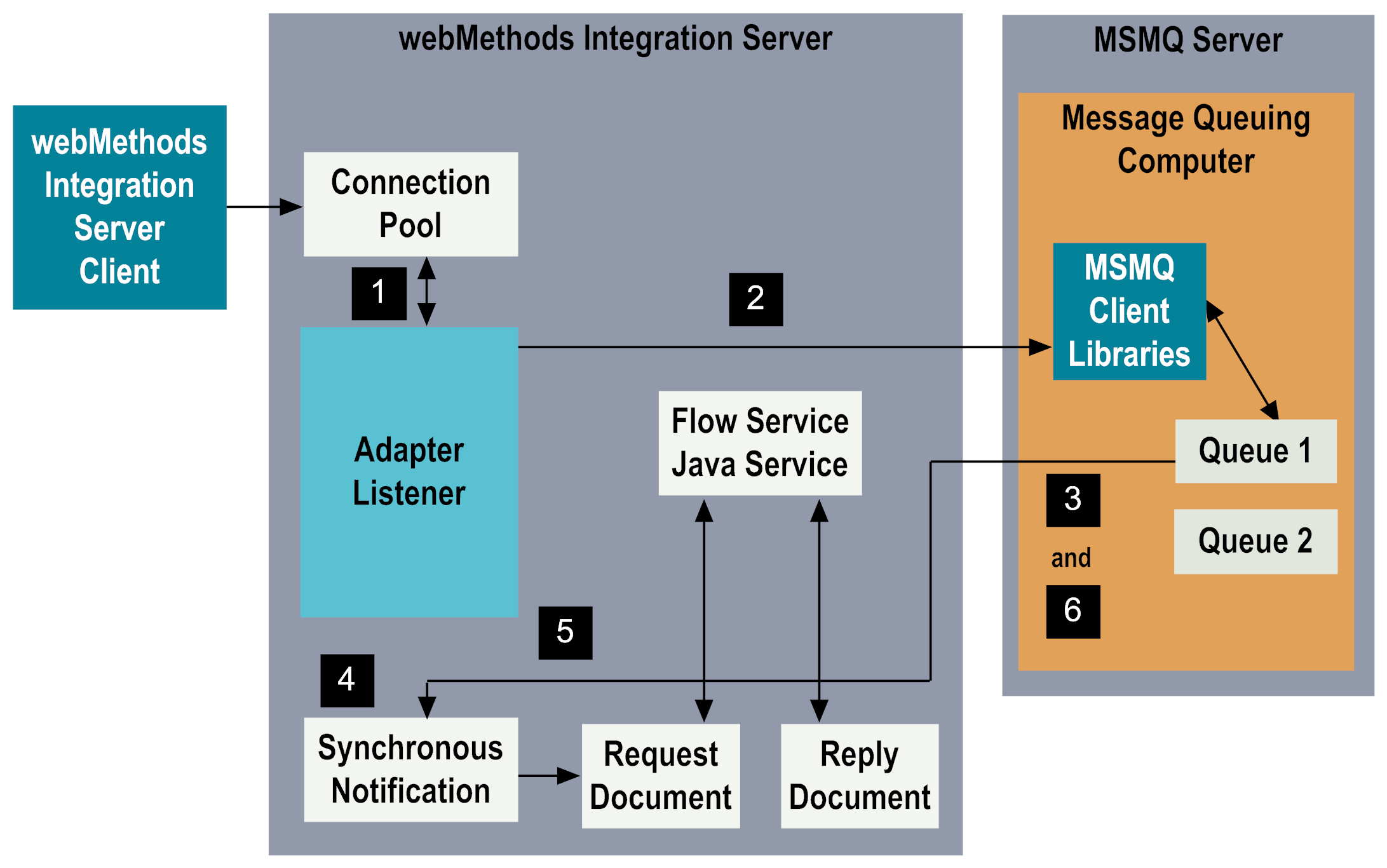

Step | Description |
1 | The listener retrieves a connection from the connection pool associated with the service. |
2 | The listener uses the MSMQ libraries to monitor and listen for messages on a queue. |
3 | When a message appears, the listener retrieves the message from the queue. The listener passes the message to the synchronous notification. |
4 | The synchronous notification compares the message properties fields against the Filter fields specified for the notification. If all specified criteria matches between the two sets of fields, the listener invokes the synchronous notification to process the message. If the specified criteria does not match between the message property fields and the Filter fields, the synchronous notification is not invoked to process the message. |
5 | The synchronous notification creates the following documents types: |
6 | After the service has processed the data in the Request document, the listener retrieves another message from the queue. |